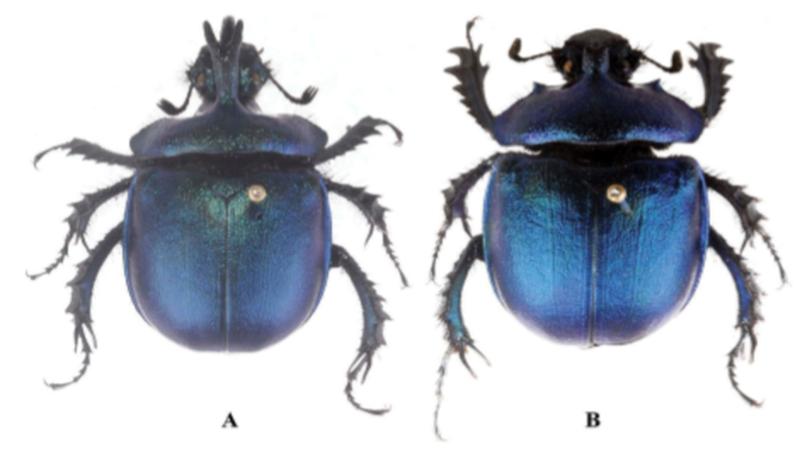
Dung beetles are fascinating creatures that consume animal dung as food and derive all their nutrients from it. These tiny beetles improve the soil structure and soil fertility by feeding on dung and play an essential role in agriculture. They also help in the dispersal of seeds present in animal’s faeces, preferring the dung of herbivores than omnivores. Dung beetles are instrumental in seed burial and adding new plants to the existing populations in tropical forests. They were one of the poorly understood insects until the 19th century when Jean Henri Fabre, a French naturalist and entomologist, studied them.
In a recent study, scientists from the Zoological Survey of India, Kolkata, have found a new species of earth-boring dung beetle in the Tawang district of Arunachal Pradesh during one of their field expeditions. Named after the district it was discovered in, Enoplotrupes tawangensis belongs to the family Geotrupidae. This study was funded by the Zoological Survey of India and was published in the journal Oriental Insects.
The earth-boring dung beetles belonging to the Geotrupidae family dig deep burrows in dung, with some species digging as deep as 2 metres. The male and female beetles mate in the burrow and the female lays its eggs in it, where they hatch.
“I have specimens similar to E. tawangensis in my collection, which I had obtained from Bhutan,” says Dr David Kral, a Czech scientist who works on dung beetles, and was a part of this study. Thus, members of E.tawangensis have so far been found in Tawang district of Arunachal Pradesh and in Bhutan, which borders Arunachal Pradesh.
Twenty species of beetles belonging to the genus Enoplotrupes have been found in India, China, Myanmar, Vietnam and Thailand. Now, E. tawangensis joins E. splendens, E. rhinoceros and E. bieti in the list of earth-boring dung beetles found in India. The members of the genus Enoplotrupes can be differentiated from other genera in the Geotrupidae family by certain distinct features. Their male genitalia has symmetrically shaped organs, the long frontal horns are well-developed in males, and females and small males have short horn-like protrusions called prominences.
E. tawangensis closely resembles E. rhinoceros; female beetles of both species have forked horns arising from the pronotum — the exoskeletal plate on the upper side of the thorax region. But they differ in the length of their horns.

Locations where the new species was found. The shaded triangles denote the other areas where beetles of species E. tawangensis is known to be distributed. Image courtesy : Zoological Survey of India
The individuals of the newly found species, E. tawangensis, are a beautiful sight to behold with their splendid natural hues. They have an oval, convex-shaped, shining, dark blue body with a slight greenish tinge on the upper surface. Their antennae and pronotal horns are blackish. The legs are shining blue on the abdominal side, while the eyes are light yellowish.
The new species exhibits sexual dimorphism — the male and female beetles of the newly found species show differences in characteristics other than those in their reproductive organs. Males are longer than females, and the female frontal and pronotal horns are shorter than those in males.
A unique feature of these beetles is male dimorphism, which is the variability in characteristics among the males of the same species. Well-developed males have longer frontal and pronotal horns compared to younger males. This phenomenon is an essential trait of survival and helps in the mating process.
“Larger males may have an advantage, either because they can gain better access to females in a male to male competition, or because females prefer them,” says Dr Devanshu Gupta, the lead author of the paper.
These tiny dung-lovers play a vital ecological role. Instances from South Africa show that dung beetles improve soil conditions and facilitate plant growth in rehabilitated coal mines.
“They are beneficial to the environment in nutrient cycling of the soil,” says Dr Gupta. “Further work is needed to establish the ecological and evolutionary significance of Enoplotrupes as they are less explored in these aspects,” he signs off.
This article has been run past the researchers, whose work is covered, to ensure accuracy.





